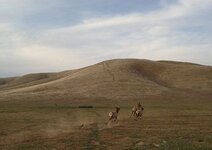- Messages
- 649
- Reactions
- 821
And a few months after getting my scope, I'll be boasting about my one inch patterns!I'll take all the Help I can get!!!
Follow along with the video below to see how to install our site as a web app on your home screen.
Note: This feature may not be available in some browsers.
And a few months after getting my scope, I'll be boasting about my one inch patterns!I'll take all the Help I can get!!!
And a few months after getting my scope, I'll be boasting about my one inch patterns!
Best explanation to me for understanding parallax from: A Beginner's Guide to Riflescopes. "Just as you focus a binocular for a particular distance, so must you focus a scope. Most big-game models, typically used at short to mid range on sizable targets, are focused at the factory for 150 to 175 yards. A scope used for small targets and/or at long range, however, must be focused manually for a precise distance via the parallax adjustment, offered either as a calibrated objective-lens bell or as a 9 o'clock dial on the turret. If the parallax adjustment is set for the wrong distance, your target will appear to be where it isn't. This is called parallax error and causes you to shoot at the wrong spot."
So, I am trying to understand what you shared with the article I just read above. For most hunting situations, 3-9x40 is all I will probably ever need. Anything above 3-9x40 reduces FOV (just one week ago, I didn't understand FOV). Not trying to find fault with what you are saying, but trying to understand. Since I am a beginner, have never hunted before, and not interested in long-range shooting, wouldn't the 3-9x40 be all I should ever need? Anyone else, feel free to answer as well!The answer to the OP's question is: Leupold VX6 2-12x42 with illuminated LR duplex reticle.
wouldn't the 3-9x40 be all I should ever need?
So, you are saying the parallax is for longer range shooter's? I doubt it would EVER be prudent for me IN MY LIFETIME to try shooting beyond 200 yards! As you advocate, I am for being ethical about shooting at an animal. For now, 200 yards is too far for me! Only target practice will let me know when and what my range will be. I went to a range a couple of weeks ago and 200 yards was ominous for me; and 300 yards was really out there!200yd shooters don't have to worry about this... One less thing to adjust!!!
There's just too many Reticles out there to list even though many are the same it's just that every Manufactures out there just has to use their own names and it's just Silly!!!


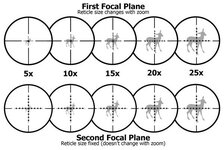
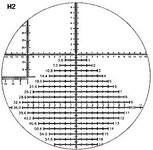
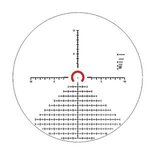
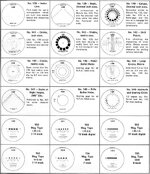
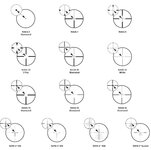
Fixed it for ya.So, you are saying the parallax (adjustment) is for longer range shooter's?
Yes, the $64,000 question! So, the article said, "keep it simple son." What is too simple, compared to getting a scope that I can competently operate now, yet I can grow into for the future? Not necessarily asking you to answer but for anyone who maybe knows.As has been said, many times, 2 power normally has a wider field of view. IMO the 12 power on the higher end won't hurt you, and can be useful on the 100yd range for benchrest shooting or seeing the holes you put in the target at 100yards. The question I have: would that scope be much more expensive than a 3x9 from the same maker? If so, is it worth the extra $$ to have those features?
Wow, great explanation. It is highly doubtful I would ever take a 300 yard shot! Parallax sounds good for long-range shooters.Far be it for me to argue with the printed word, but that description of parallax is at the least misleading and certainly incomplete.
Yes, parallax EXISTS in the image of a scope that is not adjusted for RETICLE focus to eliminate it at the given range. (NOT "focus" as it is generally understood: i.e. clarity of image).
NO! The presence of parallax does NOT automatically result in errors in aiming. The error in aiming ONLY occurs when parallax is present AND the shooter has not centered his eye in the scope. Our true concern is that centering the eye in the scope consistently might become problematic under field conditions. (Easier on the bench.) Even if one deliberately (experimentally) moves the eye toward the edge of the eyepiece, the visible parallax error is relatively minor.
Once again: the target in big game hunting is the chest cavity. With good shooting form, head positioning, etc., parallax is almost never an issue in big game hunting situations, since the shooter's eye biologically and rapidly centers itself in the image pretty darn good.
Parallax adjustments are valuable on a scope when we choose (and have practiced extensively) to take a long shot that requires the elimination of all POSSIBLE (not necessarily PRESENT) variables.
Modern scopes for high power rifles that are parallax free (with no parallax adjustment dials) at 100 or 150 yards (as they come from the factories) are entirely and amazingly precise for the vast majority of big game hunting situations and ranges. Even at longer ranges (300-400 yards) the presence of parallax has a negligible influence given even approximately proper eye positioning.
A detriment from having a parallax adjustment on a scope is somewhat similar to the potential detriment existing in a variable power scope: If we have it set for a certain range (prepping for a shot) and decline the shot, as humans we (more often than we like to admit) forget to return it to a more generic setting in readiness for the next situation. Parallax adjustments DO change the actual focus of the image. You prepped for a 350 yard shot, decline the shot, and your next shot is at 75. Your image is blurry. (and, if you forgot one knob, you likely forgot another: your scope is cranked to the highest power and all you see is ...blurry...fur.) The blurry cannot happen in a scope with no parallax adjustment. The fur-only image cannot happen with a fixed power scope of moderate magnification.
I realize that much of what I have tried to convey here sounds like bashing of variables,high magnification and parallax adjustments on scopes. It is not. I have scopes with all three on big game guns and have found benefit from each of these features in some very specific situations. However, the question at hand (and the OP at hand) requires us to supply information as to "what is best" NOT for ourselves: more what we wish we had done (or maybe commendably did) when we were at his level of experience.
Having said that, the choice of optics on guns in which I take the most pride are those of fixed (modest) power specifically chosen for THAT gun and potential application in the field. When they go to work they are a very simple and very significant pleasure that I have NEVER regretted. I cannot say the same for all my "multiple features" scopes.
So, a newbie question, if game is 300 yards away, why not move in closer to be able to tell?Where I hunt elk in rainy western WA, there is a 3 point minimum for elk. Several times I have been 300 yards away from a herd and had to decide whether multiple bulls were spikes, forked horns, or legal bulls. I don't want to pack a spotting scope with me, as I'm mostly in the timber and it would be useless 99% of the time. 12X is just about enough, I wish Leupold made the 3-18x44 with the ill LRD, but they didn't. I have come to the compromise that I will add a couple ounces to my rifle in a larger scope to have the ability to discern the legality of a bull at distance, vs having a 2-7 or 3-9 and carrying a spotter in a backpack.
I used to have Swaro Z5 3.5-18 scopes on my main elk rifles, but sold them a few years ago and replaced them with the VX6 2-12 illuminated LRD. That little red dot on 2x is GREAT in the dark timber, and 12x with the LRD lets you make hits out to 500 without dialing. Just MHO.
So, a newbie question, if game is 300 yards away, why not move in closer to be able to tell?
